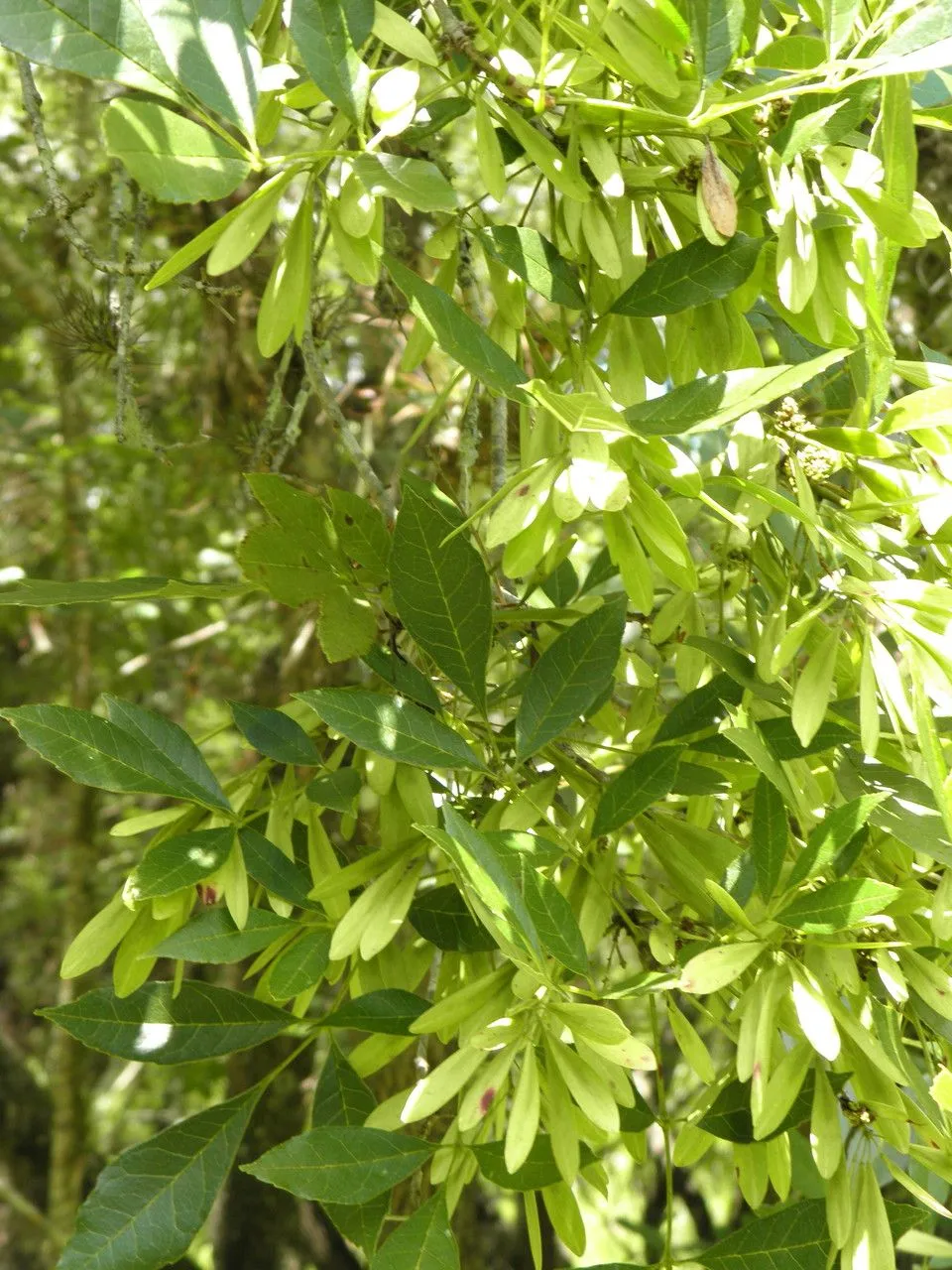
Author: Mill.
Bibliography: Gard. Dict. ed. 8: n.º 6 (1768)
Year: 1768
Status: accepted
Rank: species
Genus: Fraxinus
Vegetable: False
Observations: SE. U.S.A. to Texas, Cuba
Florida ash, scientifically known as Fraxinus caroliniana, is a notable member of the Oleaceae family. This deciduous tree is native to the southeastern regions of the United States, extending its reach from the southeastern U.S.A. to Texas, and even making an appearance in Cuba. First described by Mill. in the 8th edition of the Gardener’s Dictionary in 1768, Florida ash has since become recognized for its distinctive characteristics and adaptability.
Standing tall, Florida ash typically inhabits wetland areas. It is often found thriving in swampy conditions, alongside riverbanks and in other moisture-rich environments where it benefits from the abundant water supply. The tree’s bark is a notable feature, presenting a greyish hue with a texture that can become slightly furrowed as it matures.
The leaves of the Florida ash are compound and arranged in opposite pairs. Each leaf is composed of several leaflets, each with a finely serrated margin and an oval shape, which contribute to the tree’s lush, full appearance during the growing season. In autumn, these leaves turn a vibrant yellow, offering a striking display before they fall.
Flowering in the spring, Fraxinus caroliniana produces small, inconspicuous flowers that give way to winged seeds known as samaras. These seeds are easily dispersed by the wind, aiding in the propagation and spread of the species across suitable habitats.
Florida ash plays an important ecological role in its native regions. It provides habitat and food for various wildlife species, including birds and insects, which rely on its seeds and foliage. Additionally, its presence in wetland ecosystems helps stabilize soil and reduce erosion, contributing to the overall health and sustainability of these environments.
Although not the most widely known of the ash trees, Florida ash holds its place in the diverse tapestry of North American flora. Its ability to thrive in challenging conditions and its contribution to the environment underscore its value within its native range.
Eng: carolina ash, florida ash, pop ash, swamp ash, water ash
En: Florida ash, Pop ash, Water ash, Carolina ash, Swamp ash
Ar: مران كاروليني
Az: Karolina göyrüşü
Taken Sep 10, 2019 by that’s someguy (cc-by-sa)
Taken Sep 13, 2019 by that’s someguy (cc-by-sa)
Taken Oct 9, 2022 by Rudd (cc-by-sa)
Taken Aug 28, 2022 by TJ Mo (cc-by-sa)
Taken Jul 10, 2022 by Marc Horisberger (cc-by-sa)
Taken Feb 24, 2022 by Doc Lingo (cc-by-sa)
Taken May 8, 2013 by EOL − Sharpj99 (cc-by-nc-sa)
© copyright of the Board of Trustees of the Royal Botanic Gardens, Kew.
© copyright of the Board of Trustees of the Royal Botanic Gardens, Kew.
Growth form>: Single Stem
Growth habit>: Tree, Shrub
Growth rate>: Moderate
Ph maximum: 6.0
Ph minimum: 3.5
Family: Myrtaceae Author: (F.Muell.) K.D.Hill & L.A.S.Johnson Bibliography: Telopea 6: 402 (1995) Year: 1995 Status:…
Family: Rubiaceae Author: Pierre ex A.Froehner Bibliography: Notizbl. Bot. Gart. Berlin-Dahlem 1: 237 (1897) Year:…
Family: Sapindaceae Author: Koidz. Bibliography: J. Coll. Sci. Imp. Univ. Tokyo 32(1): 38 (1911) Year:…
Family: Asteraceae Author: A.Gray Bibliography: Pacif. Railr. Rep.: 107 (1857) Year: 1857 Status: accepted Rank:…
Family: Fabaceae Author: Medik. Bibliography: Vorles. Churpfälz. Phys.-Ökon. Ges. 2: 398 (1787) Year: 1787 Status:…
Family: Aspleniaceae Author: (Cav.) Alston Bibliography: Bull. Misc. Inform. Kew 1932: 309 (1932) Year: 1932…